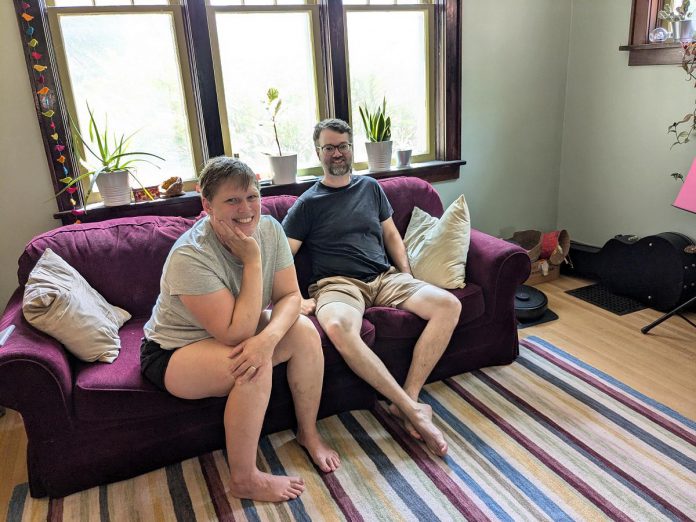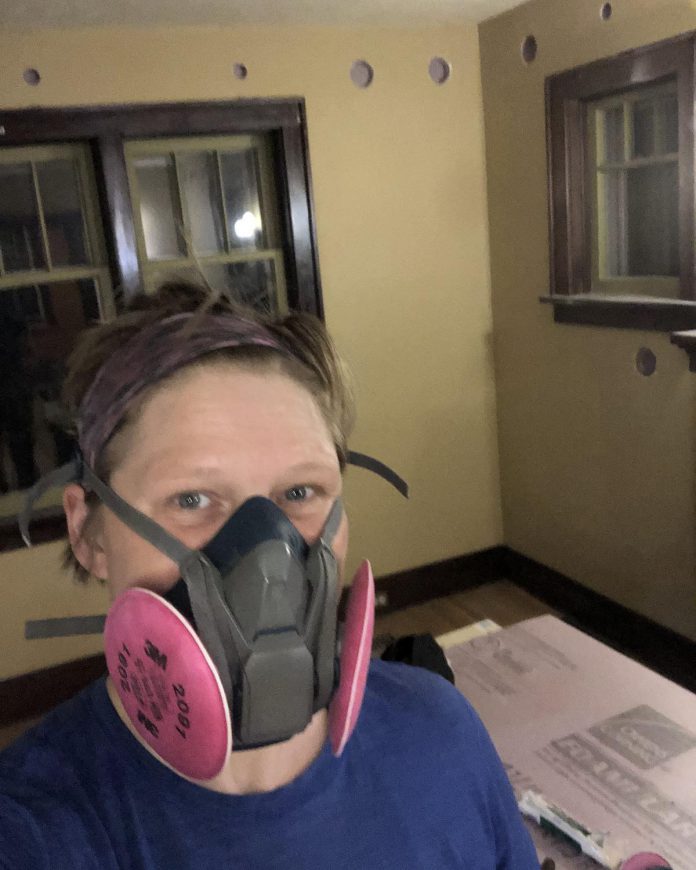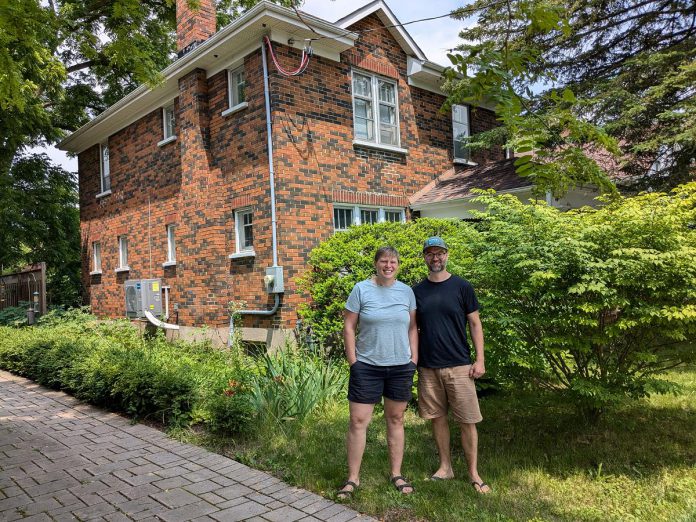
In this series, GreenUP is spotlighting homeowners from Peterborough and the surrounding region who have undertaken deep retrofits on their homes — reducing their energy use by about half and reducing greenhouse gas emissions even further.
When they investigated the carbon emissions of their household, Madeleine Endicott and Steve McMurtry were surprised to find that their biggest source of greenhouse gas emissions came from heating their home — even more than from driving.
This motivated them to start the journey to retrofit their 100-year-old Peterborough home near Bonnerworth Park, where they have lived since 2021 with their three young kids.
“We were interested in upgrades that would be cost-effective, and we wanted to do as much of the work ourselves as possible,” says Endicott.
It turned out that their brick-veneer home had an empty, uninsulated four-inch wall cavity, ideal for adding dense-packed blown-in cellulose. Cellulose is a type of insulation made from recycled newspaper, also commonly used in attics.
Modern wood-framed homes are built with insulation in the framing cavities to prevent heat loss. Homes built today have walls insulated to at least R22. In the 1970s and 1980s, R12 was commonly used. In homes built before the 1960s, there may be little to no insulation in the walls.
The R-value of insulation measures the rate at which heat is transferred through the material — the higher the R value, the slower heat will move, meaning more heat is kept inside the home in winter (and outside in summer).

It can be a challenge to add insulation to existing walls, but there are a few options available.
If a house is undergoing a major renovation and being gutted from the interior, then the insulation within the wall cavities can be upgraded. In a house with siding, a layer of insulation can be added to the exterior underneath the siding when it is being replaced.
Adding dense-packed cellulose to empty or near-empty wall cavities is another great option in many homes. This can be done from the interior (in homes with brick exterior), or from the outside when siding can be removed. Holes are drilled between every set of studs, and then a specialized machine is brought in to pack the cavities with cellulose insulation.
Endicott and McMurtry worked with Morgan Fiene of New Energy to complete this upgrade.
“Morgan was great to work with,” explains McMurtry. “They were very receptive to letting us DIY some of the work. We drilled all the holes ourselves.”
Fiene then came in with his team and a specialized blower to fill the wall cavities.
“It did take us longer than we expected to do the patchwork, sanding, and painting afterwards, but this was because of our choice to do it ourselves,” McMurtry says.
“We had to move out of the home for a couple of days and move our furniture off the main floor,” adds Endicott. “This was a dusty job.”

Their walls are now insulated to R14, better than what would be found in a typical 1980s home. The cost of the insulation was almost entirely covered by a rebate from the Home Efficiency Rebate Plus program.
In addition to the walls, the attic insulation was also topped up to R60. The results were immediately noticeable.
“Our house is a lot warmer in the winter and there are fewer cold spots, especially near the outside walls,” says McMurtry. “The upstairs is much more comfortable than it was before.”
After completing the wall insulation, Endicott and McMurtry also replaced their furnace with an air source heat pump with electric backup, although they don’t believe the backup system was ever needed during last year’s mild winter.
Endicott advises others to look into the benefits of wall insulation.
“Sometimes the less expensive and less ‘showy’ things make the biggest difference,” she explains. “When all was said and done on our insulation job, you couldn’t see any visual evidence of the work other than different paint on the walls. But it has made a huge difference in the comfort and energy efficiency of our home.”

There is still more that can be done to improve efficiency of the Endicott-McMurtry home — they still have original wood storm windows and an uninsulated basement — but, with the upgrades they have completed so far, they have reduced their total energy consumption by 43 per cent and their greenhouse gas emissions by 86 per cent.
They have also seen savings of about $440 in their energy bills over the last year, and no longer pay a bill to Enbridge Gas.
Contact GreenUP if you’re interested in starting your own deep retrofit. An EnerGuide assessment is a great starting point to guide you towards the most impactful upgrades. Visit greenup.on.ca/home-energy to learn more, or email clara.blakelock@greenup.on.ca.


























